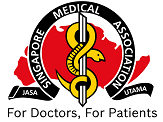Lim CP, Sim KL
Correspondence: Dr Choon Pin Lim, lim.choon.pin@nhcs.com.sg
ABSTRACT
Introduction Peripartum cardiomyopathy (PPCM) is a rare but life-threatening condition. We report 11 patients admitted to the National Heart Centre Singapore with a diagnosis of PPCM over a period of 14 months.
Methods Baseline demographics, pregnancy history, haematology, serum biochemistry and echocardiographic findings of women admitted with a diagnosis of PPCM were analysed.
Results The incidence of PPCM was 0.89 per 1,000 live births in our cohort. 63.6% of the patients were Malay and 27.3% were Chinese. 45.5% of the patients were smokers and 45.5% had a history of pregnancy-induced hypertension or preeclampsia. There was no maternal mortality. Mean left ventricular ejection fractions at diagnosis and at six months were 26.9% ± 9.1% and 51.9% ± 10.6%, respectively. Mean left ventricular internal diameters in end-diastole at diagnosis and at six months were 5.5 ± 0.5 cm and 5.1 ± 0.6 cm, respectively. All patients were treated successfully for the acute episode and all but one patient had returned to New York Heart Association functional class I status at six months.
Conclusion PPCM remains a rare condition and appears to occur more commonly in Malay patients. Smoking and pregnancy-induced hypertension appear to be significant risk factors. While short-term outcome remains excellent, collaborative studies with other tertiary centres will help enhance our understanding of the long-term management of and clinical outcomes in these patients.
Keywords:cardiomyopathy, heart failure, peripartum, pregnancy
Singapore Med J 2013; 54:24-27; http://dx.doi.org/10.11622/smedj.2013006
| 1. O'Connell JB, Costanzo-Nordin MR, Subramanian R, et al. Peripartum cardiomyopathy: clinical, hemodynamic, histologic and prognostic characteristics. J Am Coll Cardiol 1986; 8:52-6. http://dx.doi.org/10.1016/S0735-1097(86)80091-2 |
||||
| 2. Felker GM, Jaeger CJ, Klodas E, et al. Myocarditis and long-term survival in peripartum cardiomyopathy. Am Heart J 2000; 140:785- 91. http://dx.doi.org/10.1067/mhj.2000.110091 |
||||
| 3. Midei MG, DeMent SH, Feldman AM, Hutchins GM, Baughman KL. Peripartum myocarditis and cardiomyopathy. Circulation 1990; 81:922-8. http://dx.doi.org/10.1161/01.CIR.81.3.922 |
||||
| 4. Pearson G, Veille J, Rahimtoola S, et al. Peripartum cardiomyopathy: National Heart, Lung and Blood Institute and office of rare diseases (National Institute of Health) workshop recommendations and review. JAMA 2000; 283:1183-8. http://dx.doi.org/10.1001/jama.283.9.1183 |
||||
| 5. Sliwa K, Fett J, Elkayam U. Peripartum cardiomyopathy. Lancet 2006; 368:687-93. http://dx.doi.org/10.1016/S0140-6736(06)69253-2 |
||||
| 6. Mayosi BM. Contemporary trends in the epidemiology and management of cardiomyopathy and pericarditis in sub-Saharan Africa. Heart 2007; 93:1176-83. http://dx.doi.org/10.1136/hrt.2007.127746 |
||||
| 7. Brar SS, Khan SS, Sandhu GK, et al. Incidence, mortality, and racial differences in peripartum cardiomyopathy. Am J Cardiol 2007; 100:302-4. http://dx.doi.org/10.1016/j.amjcard.2007.02.092 |
||||
| 8. Lok SI, Kirkels JH, Klöpping C, Doevendans PA, de Jonge N. Peripartum cardiomyopathy: the need for a national database. Neth Heart J 2011; 19:126-33. http://dx.doi.org/10.1007/s12471-011-0083-7 |
||||
| 9. Demakis JG, Rahimtoola SH. Peripartum cardiomyopathy. Circulation 1971; 44:964-8. http://dx.doi.org/10.1161/01.CIR.44.5.964 |
||||
| 10. Selle T, Renger I, Labidi S, Bultmann I, Hilfiker-Kleiner D. Reviewing peripartum cardiomyopathy: current state of knowledge. Future Cardiol 2009; 5:175-89. http://dx.doi.org/10.2217/14796678.5.2.175 |
||||
| 11. Fett JD, Christie LG, Carraway RD, Murphy JG. Five-year prospective study of the incidence and prognosis of peripartum cardiomyopathy at a single institution. Mayo Clin Proc 2005; 80:1602-6. http://dx.doi.org/10.4065/80.12.1602 |
||||
| 12. Kamiya CA, Kitakaze M, Ishibashi-Ueda H, et al. Different characteristics of peripartum cardiomyopathy between patients complicated with and without hypertensive disorders. -Results from the Japanese Nationwide survey of peripartum cardiomyopathy. Circ J 2011; 75:1975-81. http://dx.doi.org/10.1253/circj.CJ-10-1214 |
||||
| 13. Gevaert S, Van Belleghem Y, Bouchez S, et al. Acute and critically ill peripartum cardiomyopathy and 'bridge to' therapeutic options: a single center experience with intra-aortic balloon pump, extracorporeal membrane oxygenation and continuous-flow left ventricular assist devices. Crit Care 2011; 15:R93. http://dx.doi.org/10.1186/cc10098 |
||||
| 14. Biteker M, Duran NE, Kaya H, et al. Effect of levosimendan and predictors of recovery in patients with peripartum cardiomyopathy, a randomized clinical trial. Clin Res Cardiol 2011; 100:571-7. http://dx.doi.org/10.1007/s00392-010-0279-7 |
||||
| 15. Hilfiker-Kleiner D, Kaminski K, Podewski E, et al. A cathepsin D-cleaved 16 kDa form of prolactin mediates postpartum cardiomyopathy. Cell 2007; 128:589-600. http://dx.doi.org/10.1016/j.cell.2006.12.036 |
||||
| 16. Sliwa K, Blauwet L, Tibazarwa K, et al. Evaluation of bromocriptine in the treatment of acute severe peripartum cardiomyopathy. A proof-of-concept pilot study. Circulation 2010; 121:1465-73. http://dx.doi.org/10.1161/CIRCULATIONAHA.109.901496 |
||||
| 17. Amos AM, Jaber W, Russell SD. Improved outcome in peripartum cardiomyopathy with contemporary. Am Heart J 2006; 152:509-13. http://dx.doi.org/10.1016/j.ahj.2006.02.008 |
||||
| 18. Goland S, Bitar F, Modi K, et al. Evaluation of the clinical relevance of baseline left ventricular ejection fraction as a predictor of recovery or persistence of severe dysfunction in women in the United States with peripartum cardiomyopathy. J Card Fail 2011; 17:426-30. http://dx.doi.org/10.1016/j.cardfail.2011.01.007 |
||||


